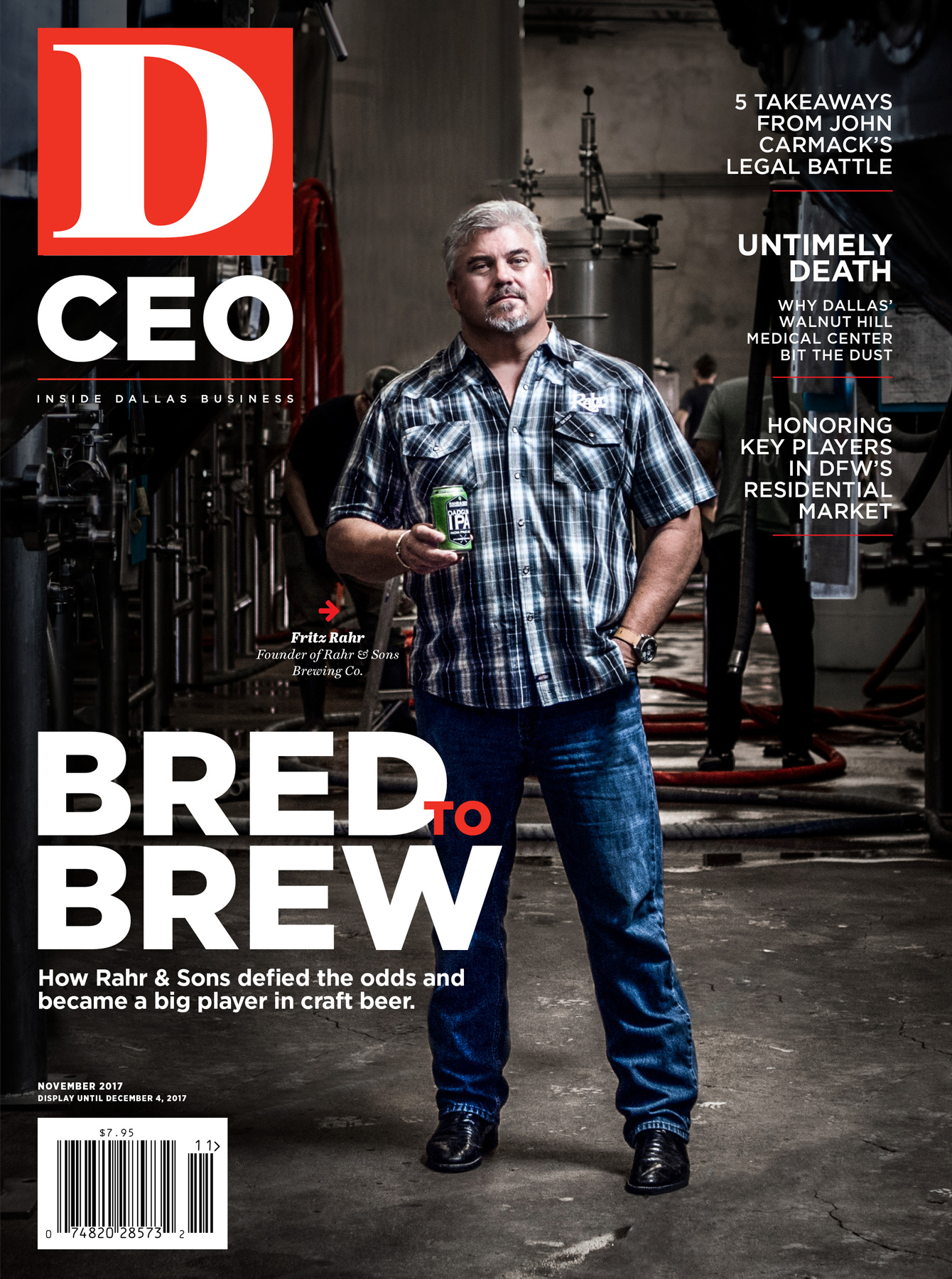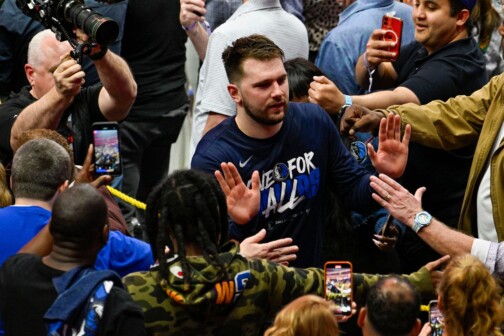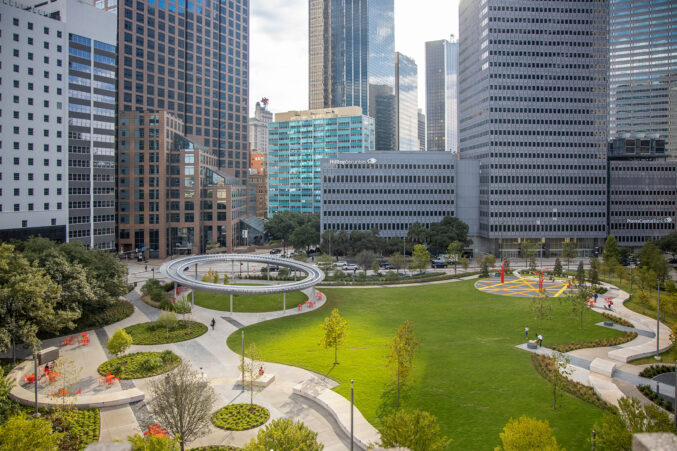It’s about 12:15 p.m. at Souk, a Mediterranean bistro and bar in Trinity Groves, and my lunch companion Dr. John Carlo is nowhere to be found. I’m seated on the patio on jewel-toned exotic furniture, listening to Arabic music blasting from the speakers and watching people eating during the Friday lunch rush. Then my phone rings. “Hi,” Carlo says. “I just got out of the shelter, but I’ll be there in five minutes!”
“That’s a good excuse,” I respond, knowing he’s dealing with Harvey evacuees in Dallas.
Carlo serves as the 134th president of the Dallas County Medical Society. The professional organization, which was established in 1876, currently has 7,100 members who are Dallas-Fort Worth physicians, medical students, and medical residents. DCMS’ mission is to promote public health, advocate for physicians and their relationships with patients, and provide medical response during natural disasters. Carlo, 44, has been with the organization for 21 years, joining when he was a medical student, and was named as DCMS’ youngest president in January.
Carlo is running off caffeine and fumes. It’s the 11th day that the Kay Bailey Hutchison Convention Center is operating as the “mega-shelter,” which the city of Dallas set up to house Hurricane Harvey evacuees from Houston and the Gulf Coast. The mega-shelter had already checked in around 3,000 people up to today. Shelters in Beaumont and Alexandria had been closing and moving evacuees up to Dallas’ main shelter. “It’s been a lot of consolidation over the past four days,” Carlo says. “I don’t know why exactly. … Maybe they ran out of service capabilities.”
It is Carlo’s job to coordinate staffing. It’s a difficult task, he notes, as operations often need more staff than expected, and he constantly has to solve tough problems under stress. “It is understanding what needs to take priority and being organized and figuring out how everyone can work well together,” he says.
For lunch, Carlo orders the crispy falafel sandwich served with a heap of thin-cut fries, hummus, tahini, cucumber, tomato relish, harissa, and pickled cucumber. Between bites, he says DCMS has utilized thousands of its member physicians for 4- to 8-hour shifts at the mega-shelter to ensure that 24/7 medical services, from pediatrics to trauma, are being provided. In addition to DCMS members, the entire DFW community has stepped up, he adds. Just for shifts on this day, more than 500 physicians are on call if needed.
“All the hospital systems have been well-represented in helping out,” Carlo says. Additionally, the American Red Cross and the Veterans Affairs Hospital have been providing relief efforts, including staffing. And the shelter welcomed the help as it expected to approach 4,000 evacuees. “The mega-shelter is set up for 5,000, but things can get uncomfortable. Especially on day 11,” he adds.
He notes problems with plumbing, having available bathrooms, people being restless—things that come up over time. “We’re in an air-conditioned parking lot with thousands of cots lined up,” Carlo says. “It works for 48 to 72 hours, but it does get harder for people to be confined there for that long.”
Carlo says Dallas’ mega-shelter would be open as long as it’s needed. And in the wake of devastation and disaster, he’s found a silver lining. “You can see the world being simplified in many ways—seeing a mix of people from different backgrounds and professions pitching in to help,” he says. “You become very focused on one task at a time. There’s some elegance in that.”
“That’s a good excuse,” I respond, knowing he’s dealing with Harvey evacuees in Dallas.
Carlo serves as the 134th president of the Dallas County Medical Society. The professional organization, which was established in 1876, currently has 7,100 members who are Dallas-Fort Worth physicians, medical students, and medical residents. DCMS’ mission is to promote public health, advocate for physicians and their relationships with patients, and provide medical response during natural disasters. Carlo, 44, has been with the organization for 21 years, joining when he was a medical student, and was named as DCMS’ youngest president in January.
“[My job] is understanding what needs to take priority and … figuring out how everyone can work well together.”
Carlo is running off caffeine and fumes. It’s the 11th day that the Kay Bailey Hutchison Convention Center is operating as the “mega-shelter,” which the city of Dallas set up to house Hurricane Harvey evacuees from Houston and the Gulf Coast. The mega-shelter had already checked in around 3,000 people up to today. Shelters in Beaumont and Alexandria had been closing and moving evacuees up to Dallas’ main shelter. “It’s been a lot of consolidation over the past four days,” Carlo says. “I don’t know why exactly. … Maybe they ran out of service capabilities.”
It is Carlo’s job to coordinate staffing. It’s a difficult task, he notes, as operations often need more staff than expected, and he constantly has to solve tough problems under stress. “It is understanding what needs to take priority and being organized and figuring out how everyone can work well together,” he says.
For lunch, Carlo orders the crispy falafel sandwich served with a heap of thin-cut fries, hummus, tahini, cucumber, tomato relish, harissa, and pickled cucumber. Between bites, he says DCMS has utilized thousands of its member physicians for 4- to 8-hour shifts at the mega-shelter to ensure that 24/7 medical services, from pediatrics to trauma, are being provided. In addition to DCMS members, the entire DFW community has stepped up, he adds. Just for shifts on this day, more than 500 physicians are on call if needed.
“All the hospital systems have been well-represented in helping out,” Carlo says. Additionally, the American Red Cross and the Veterans Affairs Hospital have been providing relief efforts, including staffing. And the shelter welcomed the help as it expected to approach 4,000 evacuees. “The mega-shelter is set up for 5,000, but things can get uncomfortable. Especially on day 11,” he adds.
He notes problems with plumbing, having available bathrooms, people being restless—things that come up over time. “We’re in an air-conditioned parking lot with thousands of cots lined up,” Carlo says. “It works for 48 to 72 hours, but it does get harder for people to be confined there for that long.”
Carlo says Dallas’ mega-shelter would be open as long as it’s needed. And in the wake of devastation and disaster, he’s found a silver lining. “You can see the world being simplified in many ways—seeing a mix of people from different backgrounds and professions pitching in to help,” he says. “You become very focused on one task at a time. There’s some elegance in that.”







